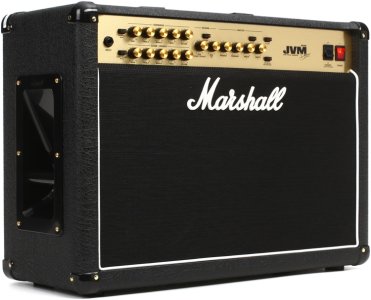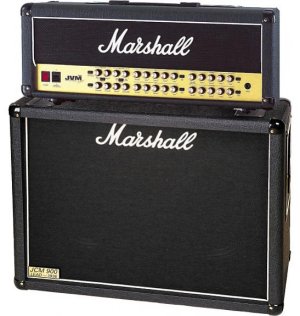Re: All amp cabs are made the same, why?
We Musicians are inherently conservative when it comes to how we like to see our instruments built.
Example A: We are the last real holdout for using tubes in electronics (except apparently for the Russian Army, another group not known for embracing the future with both hands).
For many players those new-fangled solid-state amps are still looked at skeptically. (I'll include myself in that group.)
Still, the manufacturers have continued to experiment and innovate and look for ways to improve them, and release models using the technology. The Class D power amps seems to have swept through the world of bass like a tsunami, so much so that the old-standby class AB solid-state amps are referred to as "Lead Sleds" and most companies have stopped manufacturing them.
Bass is a fundamentally different application than guitar.
Studio bass is mostly DI
If you listen to a studio bass tone, typically it's a full range direct inject that's shaped and sculpted with an EQ post-process, then compressed so that it produces an even result. There's typically no amplifier/cabinet involved in the process since the full range direct signal typically produces a better result than a mic on a bass speaker.
Whereas a guitarist might be chasing the sound of a Marshall into a 4x12, a bassist might be chasing the sound of the preamp on an old Neve recording console, or the sound of the transformer in the homemade DI used on all the Motown records, or the sound of a SansAmp Bass Driver DI.
As a result, modern bass amps have evolved in a way that allows bassists to reproduce that studio bass sound in a live environment. Massive headroom, built in high-pass filters, shelving EQs, active EQ's, semi-parametric mids, onboard compression, the ability to blend clean and dirty signals together, etc. Some have minimal colouration since the bassist may prefer to colour his sound with his DI and want's to hear something that's closer to what the PA is outputting than a highly coloured signal like a tube amp and sealed cab would produce.
Additionally, modern bass cabs have evolved to produce a more full range response... horns for the highs, loudspeakers for the mids, and multiple tuned ports to fill out the low end. It allows them to better monitor their sound since it's closer to what the audience will be hearing.
While there's plenty of bassists that dig the classic tube amp into a sealed cab sound (Ampeg SVT into 810e), there's a lot that want a far cleaner, far more full range sound and solid state works great in that application.
Class D isn't replacing tube amps in the bass world... they're replacing heavy/expensive solid state amps with lightweight/cheap solid state amps.
Live bass is mostly DI
Modern PA's have evolved to the point where the bassists amp/cab are basically a really kick ass monitor. While you may see an Ampeg SVT and 810e on stage, what you're typically hearing through the PA is the bassists DI.
This leads to a lot of frustration for bassists; they spend a lot of time/money/effort on getting a great amplified tone that the audience never hears. On stage they have this massive sound with killer punch and overdrive, then they step forward where they can hear the mains and what they hear is thin, clanky clean bass.
As a result, some bassists will spend a lot of time/money/effort on developing a really great DI sound because they want the audience to hear out front what they're hearing on stage. When you've hit the point where all your tone colouration happens in your DI rig, using a heavily coloured classic tube amp and sealed cab is a little counter-productive. Hence the preference by some for clean, high headroom amps with modern, full-range ported cabs.
IMO... the reason guitarists use tube amps and 4x12s isn't because they're a bunch of traditionalists that don't like change... it's because tube amps and 4x12s produce the sound most guitarists want.
And the reason bassists use solid state amps, DI's and modern full range cabs isn't because they're forward thinking and embrace change... it's because solid state amps and modern cabs produce the sound (some) bassists want.


